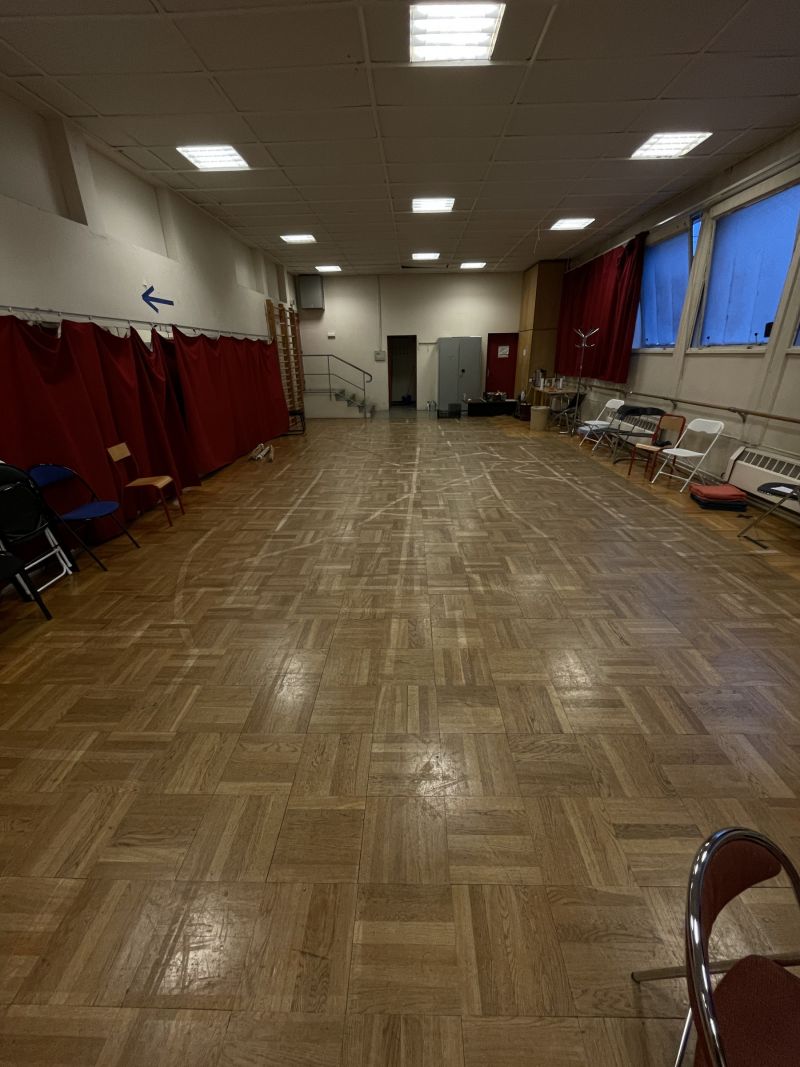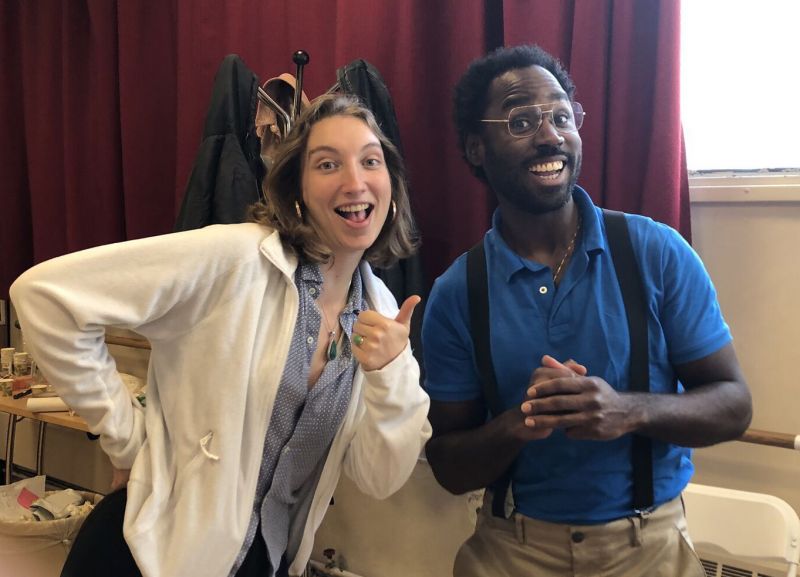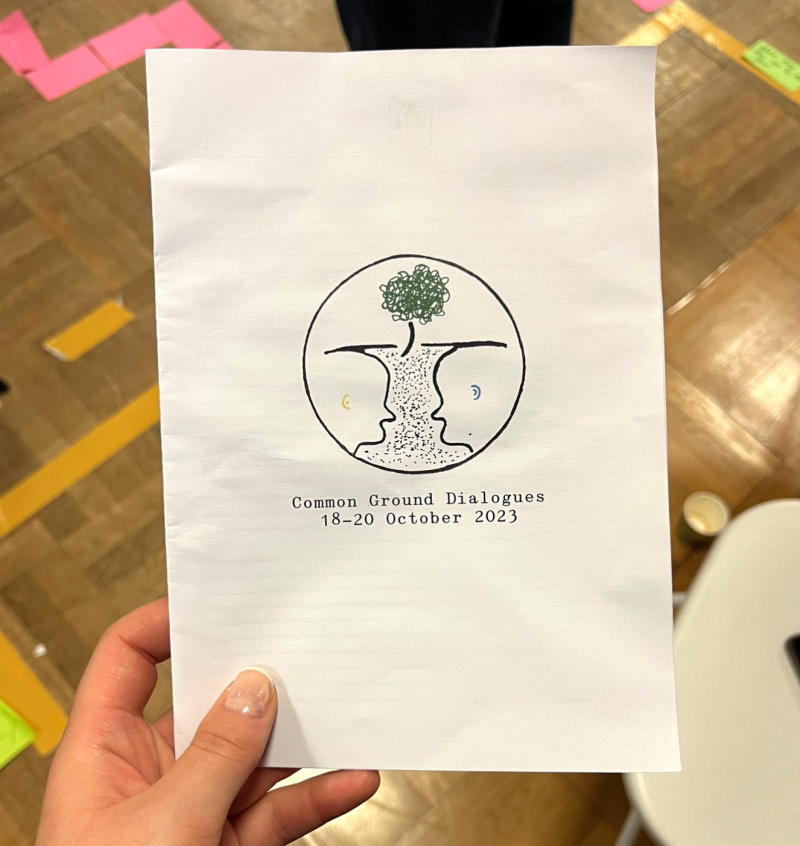
For three days, from October 18th to 20th, we had the honor of hosting Petra Ardai, Jörgen Unom Gario, and Timo Korstenbroek, researchers and practitioners from the Netherlands. They guided us through a “Storytelling Circle Training Course,” which was conducted as part of the Common Grounds Dialogue project, supported by the Creative Europe foundation. In the coming years, Hungary, Slovakia, the Netherlands, and France will lead a conversation aimed at figuring out how to use creative tools and methods to address highly polarizing issues—a project that seems imperative for the times we live in.
Petra Ardai and Jorgen Unom Gario, whom we received as part of an online Agora session in 2022, were invited to teach a methodology they have been developing through experimentations for many years. The objective of these few days together is to “use artistic tools to empower communities in addressing issues of inclusivity and equality by telling stories together and engaging in new ways of dialogue”while “developing a transferable format that is shared with practitioners in the arts and social realm.”
Context
The training session was limited to 20 selected individuals (first come, first served) who had an interest in using dialoguing techniques in situations they confront in their day-to-day lives, or as facilitators during events (workshops, get-togethers, conferences, classes, etc.). What we would come to learn from our Dutch guests was how to use playful and artistic methods to bring together participants from different cultural, socio-economic, and political backgrounds and address existing conflicts.
Before I describe what we went through during these three days, it’s essential to clarify the position we all had as participants-trainers. As much as we were trainers there to learn, we were equally exploring, as participants, very intimate situations of power, oppression, and domination. While this immersive experience is crucial to understanding the relevance of the application of these tools and methods, it also blurred the lines between the positions of spectators and actors of the training we were both following and receiving. This echoes greatly with Augusto Boal’s teachings and the Theater of the Oppressed, where he argues that all human beings are both actors and spectators, simultaneously engaging in both acting and observing, and, ultimately, practicing social change. Indeed, for Boal, using theater and arts is not revolutionary but rather “a rehearsal for the revolution.” This perspective aligns with Petra Ardai’s first series of explorations, named “Rehearsing the Revolution,” where she explores the use of theater in polarized situations to renew dialogues.
During these three days, we moved in and out as actors and spectators, experiencing reflections on interrogations such as: “how can I use this in my practice?” “How does this make me feel ?” and “what are we collectively going through?” Petra and Jorgen did not explain beforehand the reason we were doing an activity or the next - we needed to trust the process and jump into the different exercises- we would reflect on each step of the method on the third and last day. Here is a broad overview of the exercises and a personal input, as both a spectator and as an actor, of the experience towards creating a common ground dialogue.
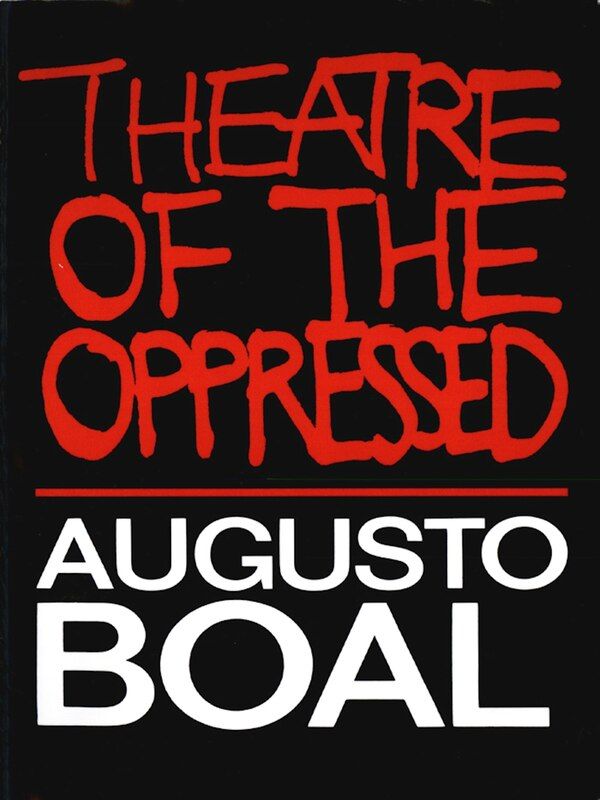
Warming up
We began day one with brief introductions within the group, to meet who we would be working with for the next three days, before engaging with our bodies. In essence, we formed a circle, each person holding a 1-meter stick on both sides. We then proceeded to move together slowly, with two conditions: consistently keep moving and never let go of the stick. In this exercise, a group of individuals who barely knew each other came to realize that they would as of now collaboratively function as a cohesive unit. Their bodies, sharing the same space, needed to move in unison to prevent the stick from being dropped.
Personal input: This simple yet effective exercise facilitated our synchronization and helped us establish a collective rhythm. Similar exercises can be found in embodied artistic approaches such as theater and dance (which I highly recommend). Many transformative practices could benefit from incorporating more physical engagement, transitioning groups from their minds to their bodies. This shift is generally valuable as it allows the group to settle in while becoming attuned to listening to others. Also, as it allows people who don’t speak the same language to connect on another level.
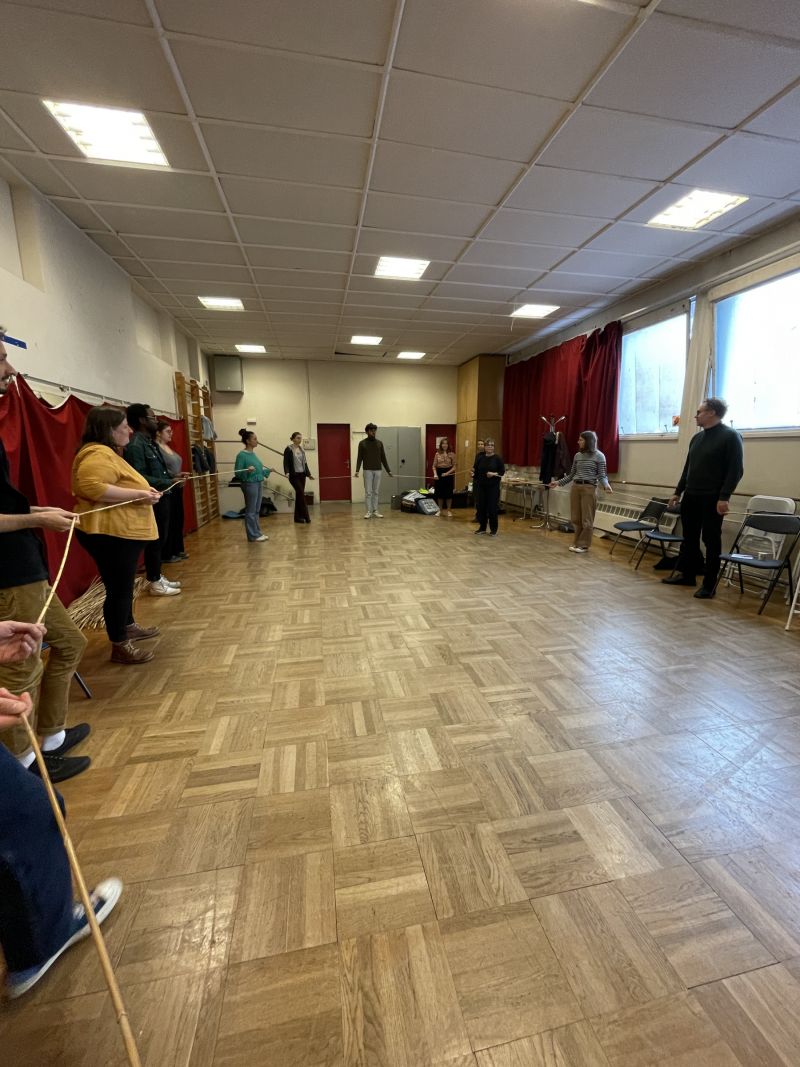
Memory map 1
We proceeded to map out a trajectory between our house and the school. We drew it on a sheet of paper before transferring it to the floor of the dance studio. Equipped with painter’s tape, we were instructed to affix our trajectories to the ground.
a) Subsequently, we discussed this route by describing how we traveled from point A to point B. These were not mundane explanations like “I crossed the street, turned a corner, and there I was.” Without being given specific instructions about details, the stories were rich with details of candy stores, mansions, friends, storms, observations, realizations, smells, and tastes. During this exercise, Petra would walk from one route to the other, inviting each individual to present their routes.
b) We regrouped and reflected on questions: What is the value of memories? How do memories relate to history? What does oppression do to memory/memories? What does privilege do to memory/memories?
Personal input: Building our memory map and sharing with others was a profound exploration into a specific moment in life, providing valuable information about each other as individuals—our origins, the climates we grew up in, what we saw as children, etc.—ultimately shaping the image of the group. It became evident that our group was predominantly European and had experienced relatively undisturbed childhoods in diverse climates throughout France (principally). It became evident that utilizing this exercise in a different context can enable trainers to grasp the diverse realities lived by individuals in the group and perhaps adapt the questions for the second part of the exercise. This exercise also presents the possibility of interesting observations within the group and can establish dynamics. Namely, who is taking up all of the ground space ? Who is not ? Who is following who ? Which routes are crossing ? Between what and what are the crossroads ?
As we reflected on the questions (b), I cannot clearly summarize what was shared. The questions were complex, and the answers reflected an attempt to make sense of what had just happened and try to link them to very strong predefined words and concepts.
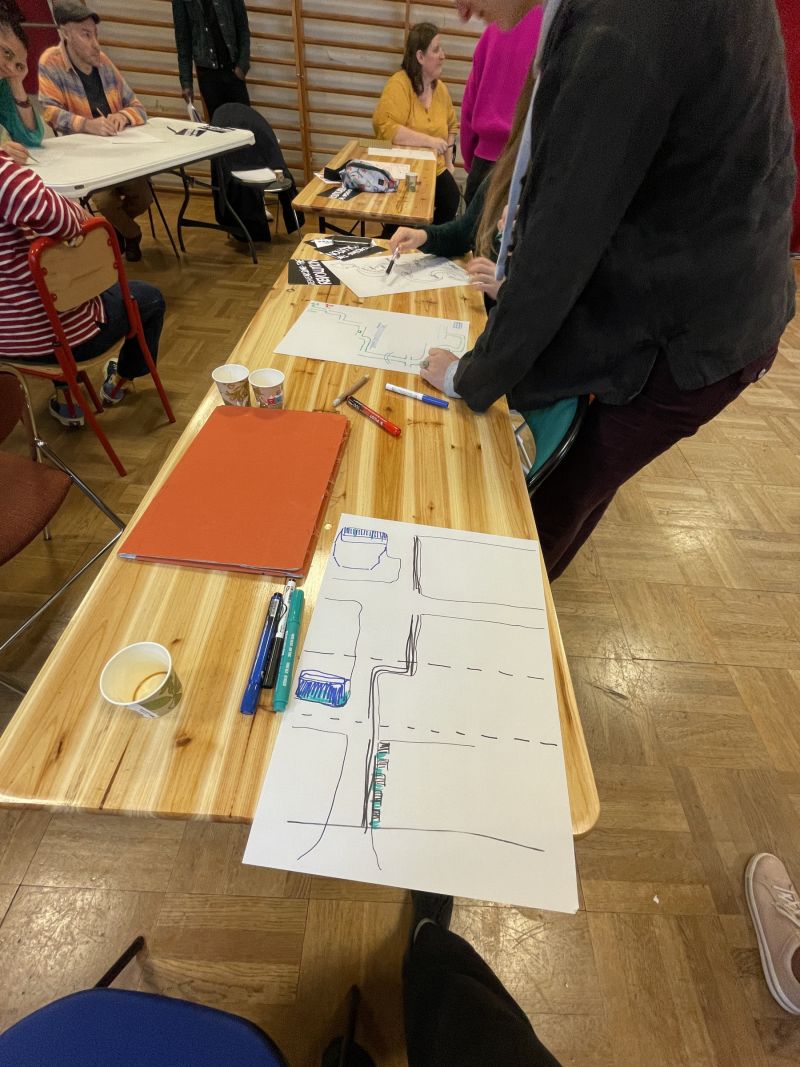
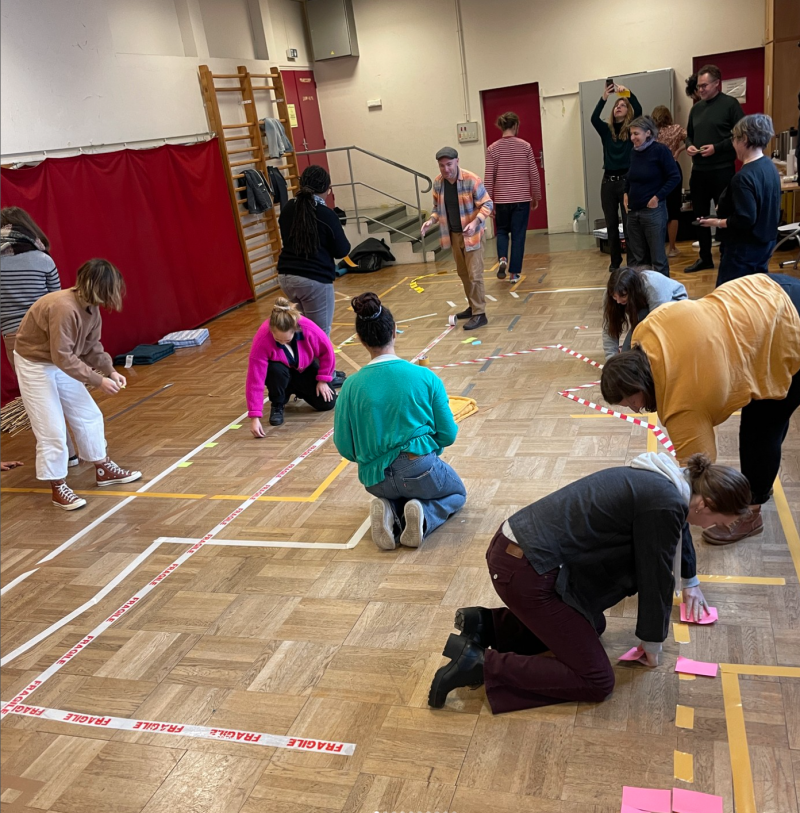
Memory map 2
We were then instructed to identify elements (plants, machines, animals, natural phenomena, landscapes) on this trajectory or stories of their appearance at some point during our route, allowing us to unearth personal and emotional childhood memories. We were then invited to close our eyes, identify a monument, stand on the place it was situated on our trajectory, and each share a story related to it.
Personal input: I was surprised to hear that a monument could have different shapes and sizes. The ones shared during this exercise depicted a monument as much as a tree then a broken mailbox. The monuments in our stories were things that stimulated our imaginations and were connected to the stories we had with them. The monument had generated some sort of emotion or was a repeated situation that had continued to live on with us throughout the years. For example, even though I had identified many different things, I knew without a doubt the important story I wanted to tell connected with the suggested word. While in my case, it included a place, it also involved people, a tree, a bird, and the relationship between all of those elements. It is a story I have repeated to myself throughout the years, becoming one of the mythologies that shape the narrative of who I am today.
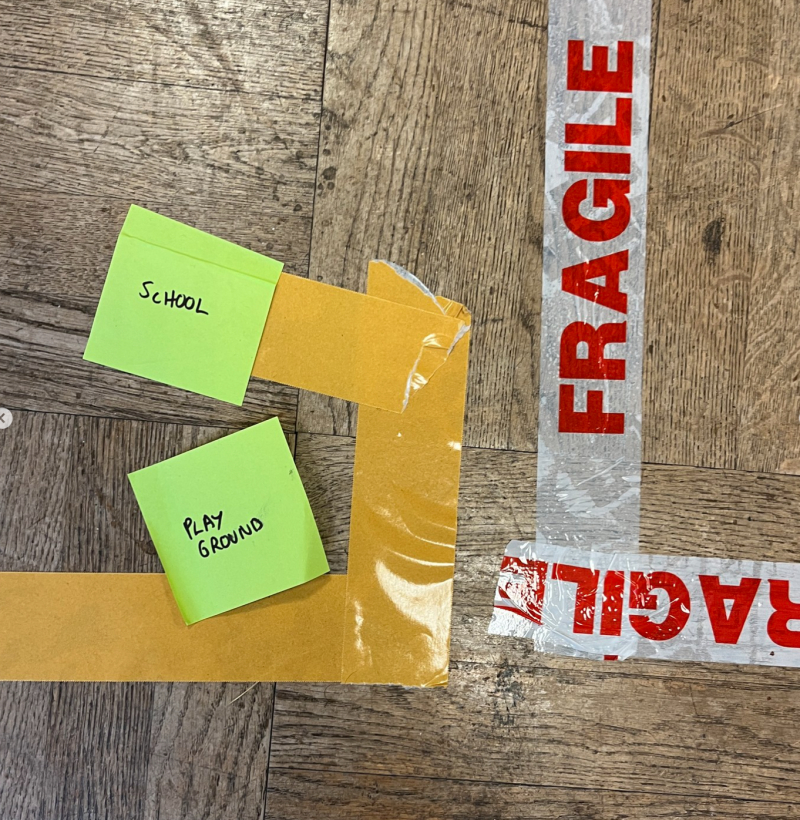
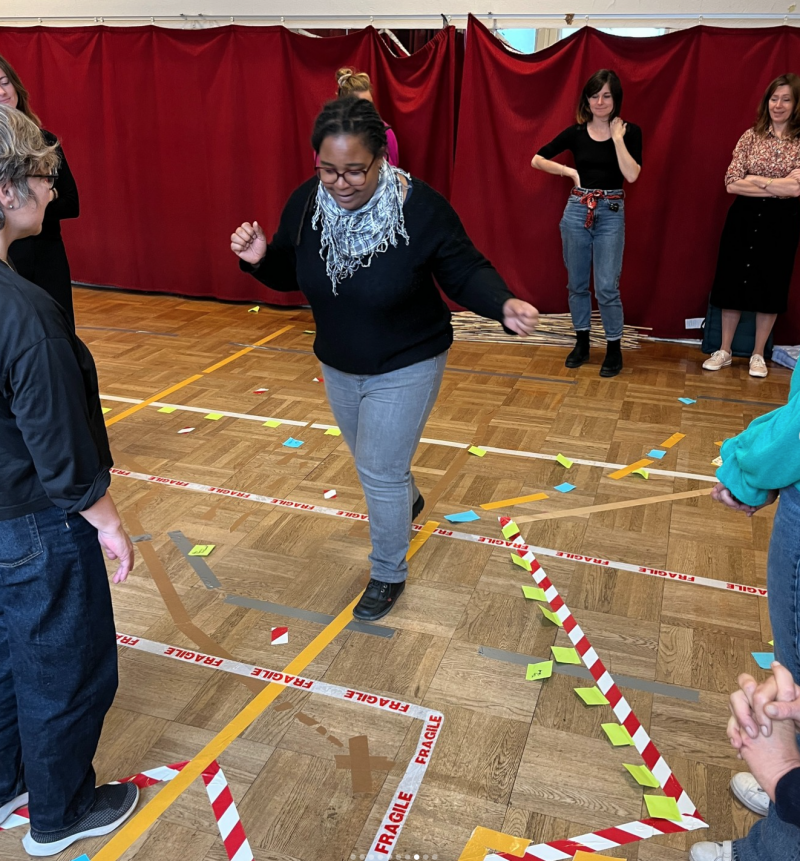
Building monument
After a day of intense talking and interpreting, it felt like a relief to return to our bodies and once again work together in silence. For this exercise, we needed rope, tape, string scissors and any other material deemed necessary to build what would become “our monument”, the monument of our group, of our collective (in other words, somewhat of a cabin, comparable to what we would build as children). A single rule applied here: no talking. We proceeded, towards putting sticks, thread and straw together to make our monument stand. The whole exercise was about making sure our monument would not fall. As participants, we would run around the room and adopt different roles to make sure it would stand: cutting tape, initiating a new membrane, holding two branches together, tying rope, that kind of thing. We activated our monument silently, waiting for it to come alive.
*Personal input**:* It was great to see how at the end of the construction, we all knew it was the end of the construction. Someone had tied a bunch of straw together forming a little hat that was deposited on the highest branch and we knew our strange, elongated and scrawny monument was completed. This type of symbol, for example, bringing an object to the highest point, might not be recognized the same way with different publics.
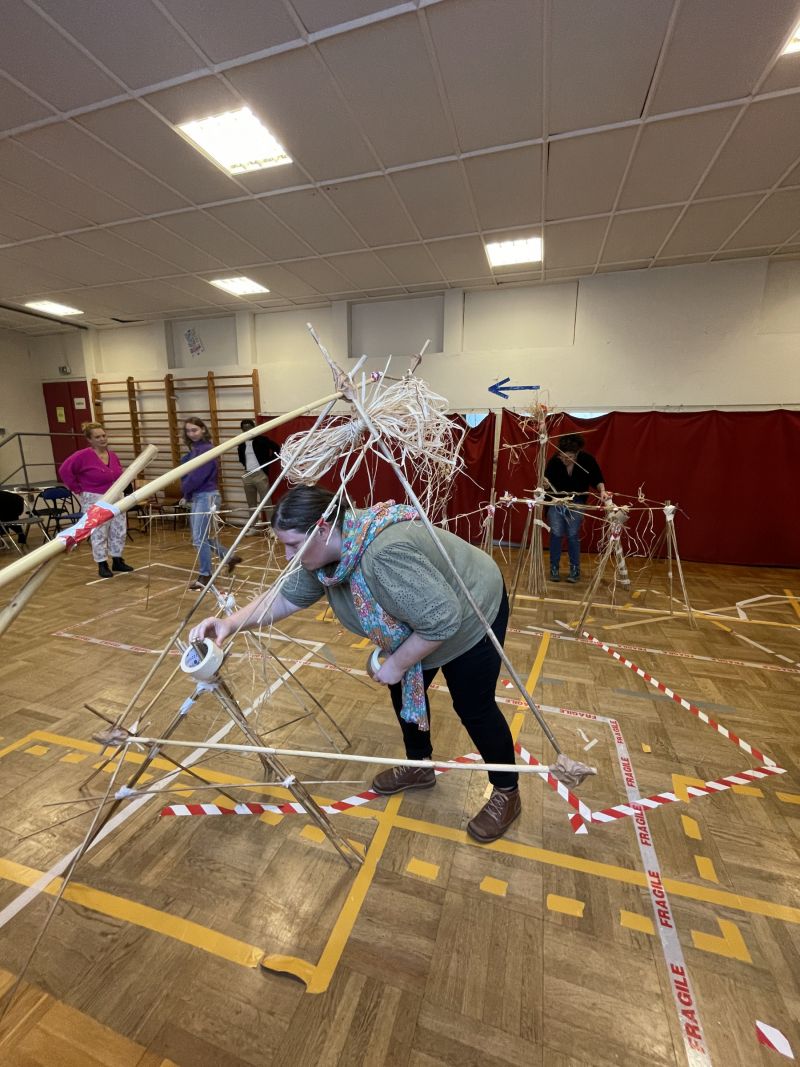
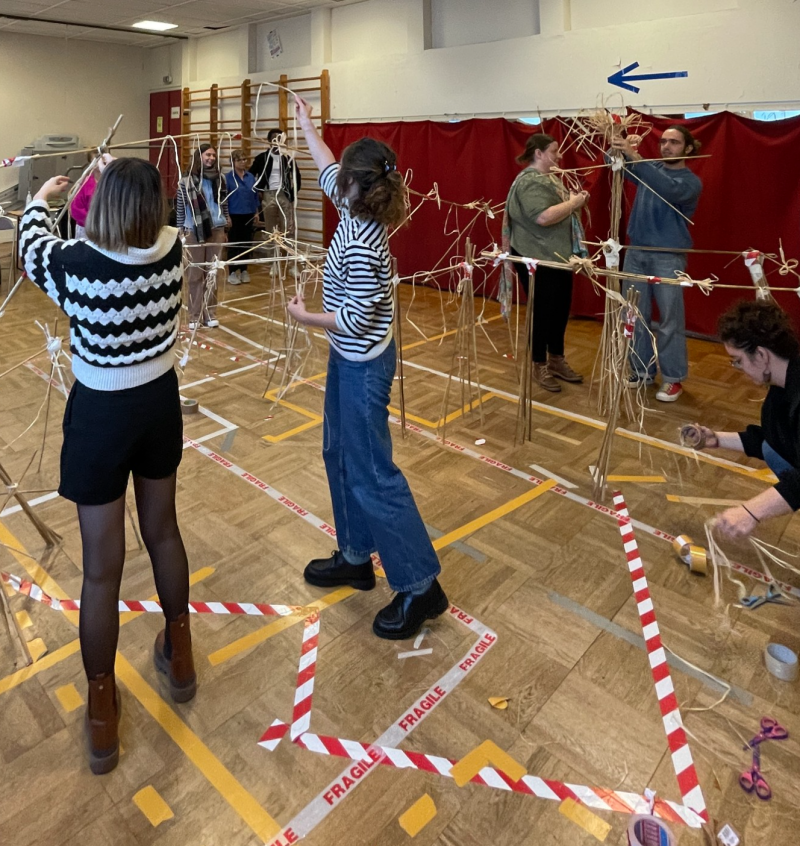
Working on Characters from groups:
We were then split up in groups of three or four and given a character. The characters were chosen based on elements that stood out for both Petra and Jorgen from the stories shared during the previous map exercise, these were: A Kookaburra bird, a little tornado, a grape vine, a mountain and a garbage truck.
In our teams, we were each given a character sheet with the following questions:
What does your natural habitat look like? Where do you feel at home? Collect the 3 elements you absolutely need to survive or that are essential to your
existence.
You live or co-exist in a web of interdependence. On whom or what does your survival depend? Who or what is dependent on you?
What are your privileges?
Do you experience any form of oppression? If so, by whom or what?
What is your superpower or secret talent?
What could be your most dangerous assumption or blind spot?
You have an important role in the whole, in the existence of the planet. What is your mission?
Make up a movement or gesture that expresses your character.
Taking place in the monument we had created, it became our habitat. Some characters were drawn to sit in the monument, while others felt they needed to sit outside of it. We were then guided by the narrator (in this case Petra Ardai) in a non-human storytelling exercise and given ground rules:
Start together and end together. The fiction must not be broken but you can disagree with each other.
If someone drops out, the game is over. You do have to take care of yourself.
Stay in the fiction.
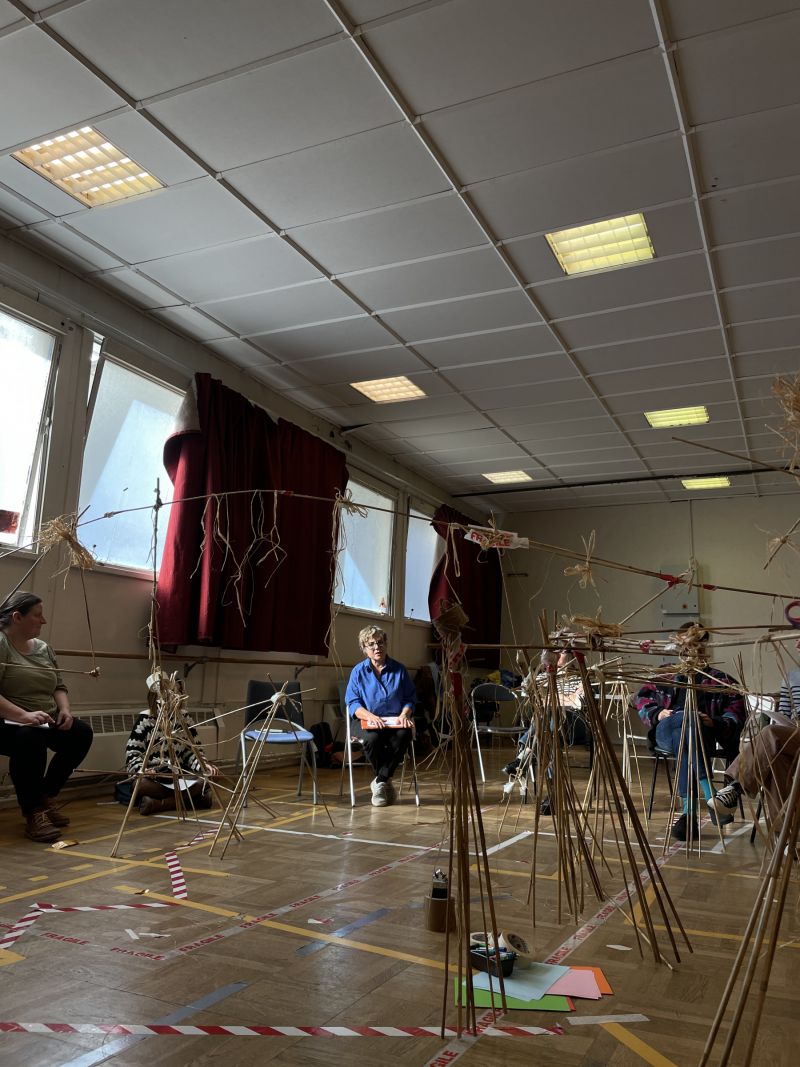
Role Playing Game
We then engaged in a RPG (Role Playing Game). We were invited to take turns and move around the space finding a new location that felt attune to the other characters we just met. Every team then expressed three essential elements they needed to survive, which is where tension would and did arise as what one character needed to survive was detrimental to another.
For example, the little tornado’s objective was to grow and therefore needed chaos, which did not necessarily sit well with the other characters in the game, such as the vine which hoped to grow by digging deep roots and would be affected by deep winds.
Sustaining these back and forths between the narrators (Petra and Jorgen) and the characters (us), the teams were asked a number of questions relating to their characters such as:
Would you allow new creatures, eventually humans to live with you ?
If not, why not and what will happen ?
If yes, under what conditions ?
And other questions addressing larger themes, such as:
What does life look like in the habitat? What are the power relations?
Which other life forms/characters do you suspect desire more power and why?
Which characters enjoy privileges and who do they oppress with it?
This continued for sometime, until the narrator decided it was time to end the fiction. We headed in a reflection about the exercise with the following questions:
What was it like doing this and representing a non-human character?
Were things in the story you made up that you didn’t expect of yourself?
What real-life dilemmas did you encounter and recognize in the story?
Personal input: This exercise was both eye opening and could also be confronting and confusing. Some roles were designed to be antagonists, some to be victims, some to be stable and others to be heroes. While some power dynamics would change throughout the story when Petra and Jorgen introduced a new bifurcation, some characters could not go beyond what they were chosen to be. Namely, the trash truck would find it more difficult to elevate itself to anything else than complete destruction. It can be complex for participants-actors to be given such a role without being ready to play them. Or understanding how far they can go beyond the descriptions of the characters.
It is clear that this exercise was meant to make visible power dynamics, as the characters had very different journeys. It brings forward a general question, do we need tension between characters for the common story to be interesting and successful? Do the stories need characters generally depicted as “bad” to go through a transformational journey for the story to be interesting ?
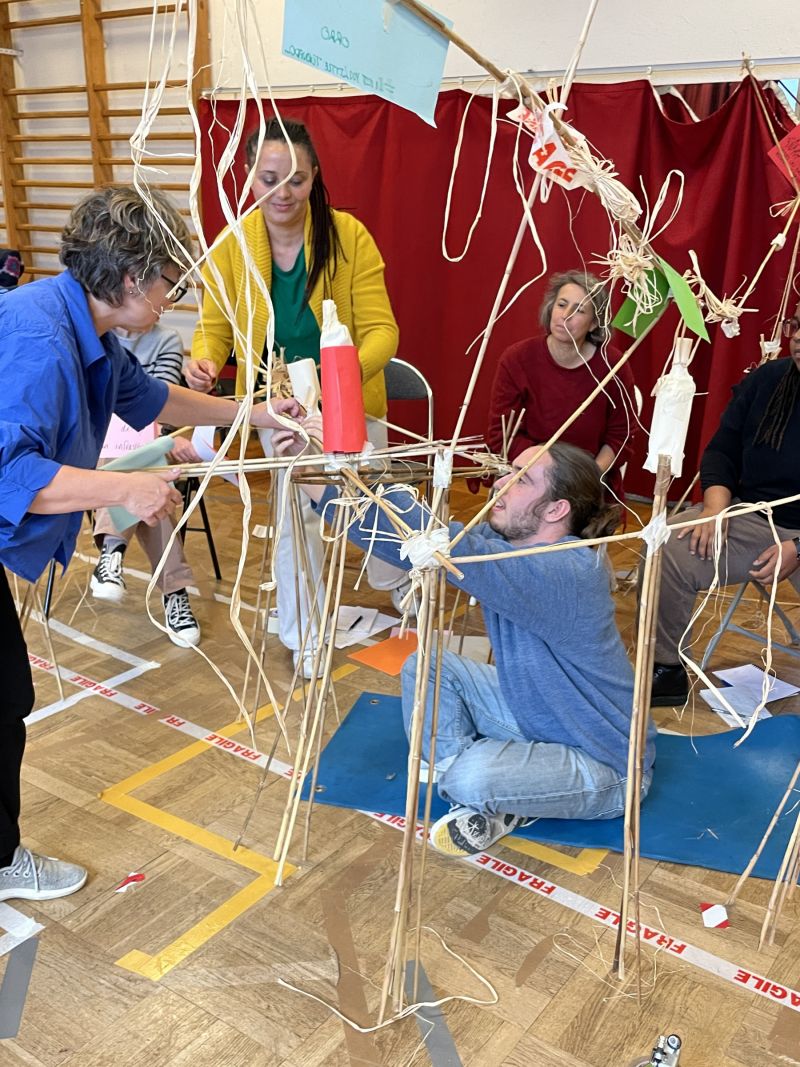
Conclusions
The feedback we received from the participants who took part in the training confirmed our intuitions about how we felt during the experience: that it was overall a great experience, where they learned useful and interesting tools and insights, but also felt sometimes confused as the project itself was meant to gather research material.
“Common Ground Dialogues was about using artistic techniques to initiate dialogue among polarised people. Understanding that this project was itself in a research phase and that they were the corpus of study, moving from the different point of views as participants and trainers could be confusing. Nevertheless, using art and reconnecting with artistic approaches always feels inspiring.”
In terms of the overall method, the participants felt they came out with a series of tools rather than an applicable methodology.
- “I’m not sure I’ve come out of it with a clear understanding of methods on how to articulate polarized dialogues but from what Petra mentioned on the last day, I acknowledged that the final results in the form of a methodology would be shared as an open source at the end of the project. And I would very much like to know how to follow the project throughout.”
- “I really enjoyed navigating through the different exercises and reflecting on the way we tell ourselves stories. In terms of pure method, I don’t yet know what I could adapt directly to another context. However, the exercises on abstract geography make me want to look at spatialisation as a tool for collective storytelling.”
As the group was also composed of a majority of privileged white participants, some participants felt that the training evoked other thoughts and prompted them to question their own privilege, perhaps for the first time, as they felt under-represented in the group.
- “Following on from the debrief on Day 3, I have my doubts about the reinforcing effects of privilege induced by the absence or under-representation of minorities. The group of mainly white women seemed to me to be leaning towards a form of … white feminism. So I still don’t understand how we were supposed to position ourselves according to our privilege. In France there’s a majority tendency towards what’s called “universalism”, but that mostly means that we’re not supposed to talk about racial or even post-colonial issues. Another, more minority view, with which I identify more, tends to recognise the existence of racism as a social fact, and therefore to say that we collectively have a racism problem. Hence my position, which may not have been understood when I said “being on the side of the oppressors”. In other words, as a white person, I can be an ally, but I’ll always have the privileges of the oppressors and I’m part of the problem.
This type of feedback illustrates the very reason why the method developed as part of this project will yield important results and provide necessary tools to address complex issues. Indeed, while some of the exercises are being fine-tuned and tested, it already feels as though participants are becoming actors in their own roles in society, exploring their intimate relationship to oppression, domination, and privilege, and rehearsing different ways of communicating.
Written by Chloé Luchs
